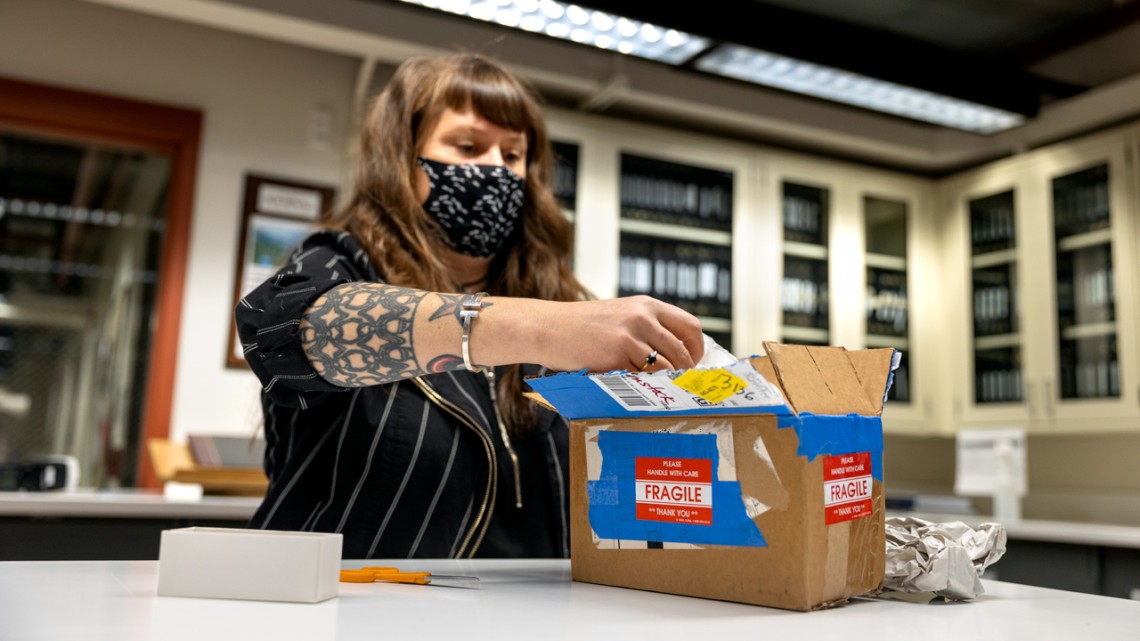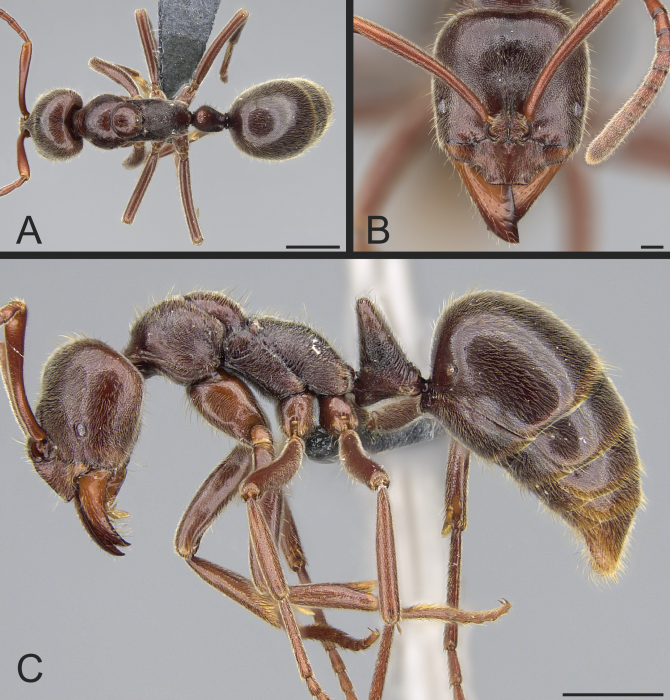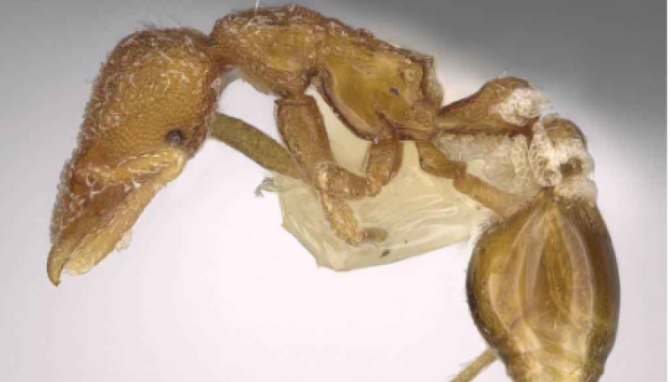
Corrie Moreau, the Martha N. and John C. Moser Professor of Arthropod Biosystematics and Biodiversity and director of the Cornell University Insect Collection, unboxes a new ant species that has been named after her.
New ant species and genus both named for Cornell’s Moreau
By Hillary Creedon
A new ant species collected in New Mexico has been named Strumigenys moreauviae, after Corrie Moreau, the Martha N. and John C. Moser Professor of Arthropod Biosystematics and Biodiversity and director of the Cornell University Insect Collection, in honor of her “viral enthusiasm of the ant world and unapologetic inclusiveness.”
In addition, Moreau was honored in the name for a new ant genus discovered in 2018 in French Guiana: Corrieopone nouragues.
“A flagbearer for gender inclusion and diversity in our field, audacious, upbeat and the owner of a contagious laugh, Corrie inspires everybody with her trailblazing, glass ceiling- and stereotype-breaking approach to science,” the researchers, Flavia Esteves and Brian Fisher, wrote in their article describing the new genus.
The discovery of Corrieopone was spurred by Moreau and colleague and spouse Christophe Duplais’ suggestion to house [a California Academy of Sciences] Ant Course at the Nouragues Research Station in French Guiana, the researchers said. Duplais is an associate research professor of entomology at Cornell AgriTech.
Strumigenys moreauviae was named by Douglas B. Booher, a postdoctoral associate in the Biodiversity and Global Change Center in the Jetz Lab at Yale University and an expert on the Strumigenys ant genus, after he identified biological differences in the collected ant. That necessitated officially naming and describing the new species.
The Strumigenys moreauviae was “named after distinguished scientist and myrmecologist Dr. Corrie S. Moreau for her significant contributions as an evolutionary biologist,” Booher wrote in his article, “The Ant Genus Strumigenys Smith, 1860 (Hymenoptera: Formicidae) in Western North American North of New Mexico,” published Nov. 4 in Zootaxa. “I met Dr. Moreau as a student at the first Ant Course in 2001 and was infected, as many other myrmecologists have been, by her viral enthusiasm of the ant world and unapologetic inclusiveness.
“The name was created by adding the singular Latin genitive case suffix -ae to the last name of a female person, this ending preceded by the infix -vi- inserted for ease of pronunciation. The orthography of an eponym is an unchangeable genitive noun and does not depend on the generic name in which the epithet is used.”
The Strumigenys moreauviae holotype is now a permanent addition to the CUIC alongside the collection’s 200,000 other insect species.
“I am so deeply honored to have an ant species and an ant genus named after me,” Moreau said. “In biodiversity research, this is one of the highest honors and I feel deeply humbled to be recognized by my colleagues in this way. Not only is it an honor to have a species and even a genus named after me, but to have both of them include explicitly in the scientific publications describing these new ants my commitment to making all of science more inclusive and equitable is truly humbling.”
Little is known about the Strumigenys moreauviae. It was discovered in 1999 but had remained an unknown species until its recent description by Booher. It is part of the extremely diverse Strumigenys ant genus, found around the world with more than 850 described and existing species to date.
The leaf-litter ants are typically found in moist tropical and subtropical rainforests and are absent from arctic zones. While existing in temperate zones and arid regions, they do so in low diversity. In North America specifically, the Strumigenys are common in Eastern deciduous forests but less so in the West.
Moreau served on Booher’s dissertation committee while he pursued his Ph.D. in ecology and evolutionary biology at the University of California, Los Angeles. In 2018, Booher worked alongside Moreau at the Field Museum in Chicago while completing his National Science Foundation Biological Collections Postdoctoral Fellowship.
Moreau has spent her career working in natural history collections – as an undergraduate and master’s student at San Francisco State University; a doctoral student at Harvard University; a postdoctoral researcher at the University of California, Berkeley; in her previous faculty position as director of the Integrative Research Center at the Field Museum of Natural History in Chicago; and, most recently, her position as head curator and director of the CUIC, responsible for its overall administration, development and enhancement.
Her own research unites genomic DNA and microbiology to get a richer picture of how ants have been so evolutionarily and ecologically successful.
“Corrie’s lab is an extension of herself, a collection of excellent scientists with diverse personalities and many backgrounds,” Booher said. “Her lab always felt kind and supportive, a great environment. Corrie has supported the diversity of humans in her lab and in her life, and that is something I wanted to honor when naming an ant after her. She has always come across to me as a genuine force of change for diversity [and] inclusion; she does this elegantly and functionally, mentoring and producing excellent and prepared young scientists in her lab.”
Hillary Creedon is a communications specialist in the College of Agriculture and Life Sciences.
Media Contact
Get Cornell news delivered right to your inbox.
Subscribe


